Digital Multimeters
-
FREE Oxford Carry Case
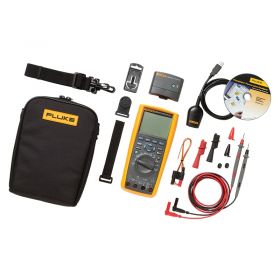
 Free UK DeliveryFluke 289 Multimeter, ir3000 FC Connector & FlukeView® Forms Kit£1,204.80 £1,004.00
Free UK DeliveryFluke 289 Multimeter, ir3000 FC Connector & FlukeView® Forms Kit£1,204.80 £1,004.00- Fluke 289 True-RMS Multimeter is optimised for troubleshooting difficult-to-identify electronic problems
- Communicate findings to colleagues and clients via the Fluke Connect™ App using the included Fluke ir3000 FC Connector
- Perform comprehensive data analysis and create customised reports using the Fluke FlukeView® Forms Software Plus Designer
1004 Reward PointsPrice Match GuaranteeFluke 289/FVF/IR3000 -
Price Drop | Save £134
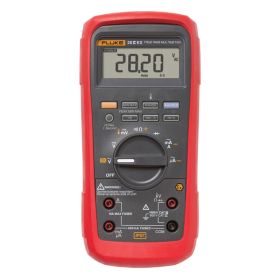
 Free UK DeliveryFluke 28 II Ex Intrinsically Safe True-RMS Digital Multimeter£1,362.00 £1,135.00
Free UK DeliveryFluke 28 II Ex Intrinsically Safe True-RMS Digital Multimeter£1,362.00 £1,135.00- Completely safe for use in dangerous combustible environments
- Large suite of measurement functions
- Dust proof, drop proof and waterproof
1135 Reward PointsPrice Match GuaranteeFLUKE28II/EX -
FREE Oxford Carry Case
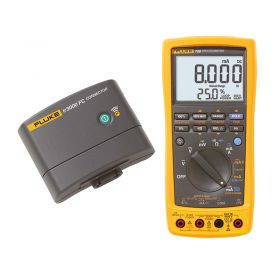
 Free UK DeliveryFluke 789/IR3000FC Process Meter and FC Connector£1,410.00 £1,175.00
Free UK DeliveryFluke 789/IR3000FC Process Meter and FC Connector£1,410.00 £1,175.00- IR3000FC Connector facilitates a connection to the Fluke Connect App
- Fluke 789: combined DMM and mA loop calibrator
- Large, dual display with two levels of backlighting
1175 Reward PointsPrice Match GuaranteeFLUKE 789/IR3000FC -
FREE Oxford Carry Case
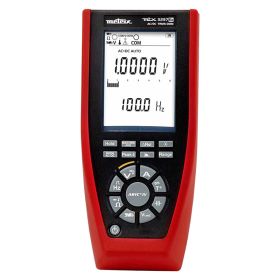
 Free UK DeliveryChauvin Arnoux MTX3297Ex Intrinsically Safe ATEX Multimeter£1,719.60 £1,433.00
Free UK DeliveryChauvin Arnoux MTX3297Ex Intrinsically Safe ATEX Multimeter£1,719.60 £1,433.00- Capacitance and temperature
- TRMS AC+DC acquisition
- 60,000-count display
1433 Reward PointsPrice Match GuaranteeMTX3297 -
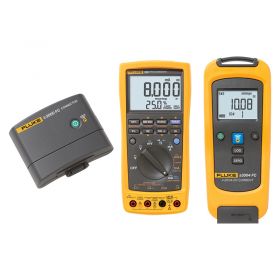
 Free UK DeliveryFluke 789 ProcessMeter™, IR3000FC Connector & A3004FC Clamp Meter Kit£2,034.00 £1,695.00
Free UK DeliveryFluke 789 ProcessMeter™, IR3000FC Connector & A3004FC Clamp Meter Kit£2,034.00 £1,695.00- Fluke 789 ProcessMeter™: a combined digital multimeter and mA loop calibrator
- Fluke IR3000FC Connector: facilitates a connection between the Fluke 789 and Fluke Connect™ App
- Fluke A3004FC Clamp Meter: current clamp capable of wirelessly transferring measurements
1695 Reward PointsPrice Match Guarantee4722828
About Digital Multimeters
While traditional multimeters have used analogue displays which involved a needle moving across a scale, they're generally waning in popularity compared to digital multimeters (DMM).
Digital multimeters offer several advantages over their analogue counterparts. They're generally much more varied in the number of different parameters they can measure, have built-in advanced features and generate numerical value results which are much more accurate than tracking parameter fluctuations on an analogue scale.
The most basic digital multimeters generally are used for measuring voltage, current, and resistance levels. Upgraded DMMs often contain additional measurement capabilities, and can be used to test such things as temperature or capacitance. Electrical professionals often find their multimeter is the one tool they turn to the most, simply because of the versatility of the device and its ability to be used in a wide variety of different electrical applications.
Most digital variety multimeters are also encased in incredibly small bodies - many of them are even pocket-sized, and can still be used for carrying out measurements of electrical and other properties. They're also generally brimming with advanced features such as autoranging, data hold, and MAX/MIN measurements.
Autoranging digital multimeters are much safer than manual ranging devices. Each multimeter - depending on the make and model - will have an integrated range built into the device. This means that the DMM is capable of measuring up to the upper threshold of that range, but once a manual ranging multimeter passes this threshold, it will display 'OL', which means it has exceeded its capabilities. Autoranging multimeters are made to automatically adjust their range to the targeted application, and even when they move outside a range they will automatically adjust themselves to make sure that the user still gets a numerical reading. It is important to consider exactly whether an autoranging or manual ranging device applies to your needs when buying a multimeter - manual ranging multimeters may not have the ability to adjust their range automatically, but they are more efficient at stopping ghost voltage readings.
A common DMM generally consists of an LCD screen encased into a tester that features a rotary dial on the front. Users use this rotary dial to select between different test procedures and features, and the results are relayed automatically to the LCD screen when taken. Using either internal data storage or a data hold mode it's possible to either permanently store this data (and download it later to a PC using various connections) or hold data on screen temporarily while it is jotted down or shown to someone else. Most digital multimeters also feature ports for test leads, and many also ship as standard which is applicable to test leads for carrying out the tests that a particular digital multimeter can perform.


